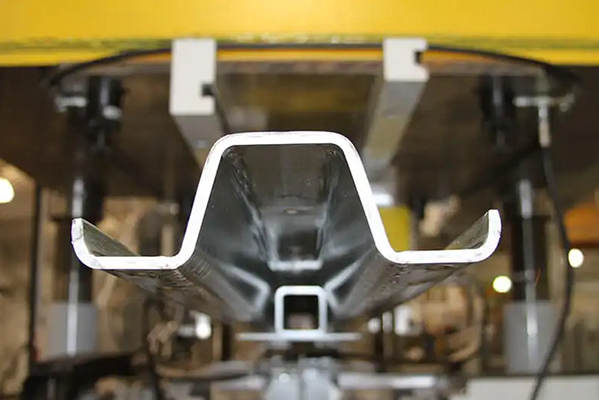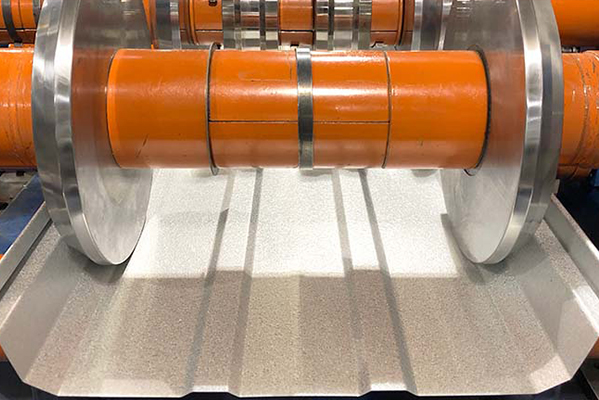Navigation Menu
Contact Us
- Email:
- info@wxavatar.com
- Address:
- Yurong Village, Yuqi Street, Huishan District, Wuxi, China.
Release Date:Jul 30, 2025 Visit:22 Source:Roll Forming Machine Factory
Metal forming is a critical process in manufacturing, with various techniques available to shape metal into desired profiles. Among these methods, roll forming has become increasingly popular for certain applications. This article examines how roll forming machines compare to other common metal forming techniques, highlighting their respective advantages and suitable applications.

Understanding Roll Forming
Roll forming is a continuous bending operation where a long strip of metal (typically coiled steel) passes through sets of rolls mounted on consecutive stands. Each set of rolls performs an incremental part of the bend until the desired cross-section profile is obtained. This process is particularly effective for creating long lengths of formed metal with consistent cross-sections.
Comparison with Other Metal Forming Methods
1. Roll Forming vs. Press Braking
Press braking uses a punch and die to bend metal sheets at specific angles. Compared to roll forming:
Production Speed: Roll forming is significantly faster for long production runs of identical profiles
Tooling Costs: Press brakes have lower initial tooling costs but higher per-unit costs for large quantities
Flexibility: Press brakes offer more flexibility for short runs and prototype work
Material Thickness: Press brakes can generally handle thicker materials than roll forming machines
2. Roll Forming vs. Stamping
Stamping uses dies to cut and form metal in a single operation. Key differences include:
Part Length: Stamping is limited by press size, while roll forming can produce virtually unlimited lengths
Tooling Complexity: Stamping dies are typically more complex and expensive than roll forming tooling
Production Volume: Stamping is often more economical for very high volumes of smaller parts
Material Waste: Roll forming typically generates less scrap material than stamping operations
3. Roll Forming vs. Extrusion
Metal extrusion forces material through a die to create long products with fixed cross-sections:
Material Options: Extrusion works well with aluminum and other softer metals, while roll forming primarily handles steel
Cross-Section Complexity: Extrusion can produce more complex hollow sections than roll forming
Strength Characteristics: Roll formed products often have better mechanical properties due to work hardening
Equipment Costs: Extrusion typically requires higher capital investment than roll forming setups
4. Roll Forming vs. Tube/Pipe Mills
While similar in concept to roll forming, tube mills specifically produce tubular products:
Product Focus: Tube mills are specialized for circular and rectangular tubing production
Seam Welding: Tube mills incorporate welding for closed sections, which standard roll forming doesn't require
Flexibility: General roll forming machines can produce a wider variety of profiles
Advantages of Roll Forming Machines
Roll forming offers several benefits that make it preferable for certain applications:
Consistent Quality: Produces uniform cross-sections over long lengths
Efficient Material Use: Minimizes waste compared to many other forming methods
Surface Finish: Maintains better surface quality than many competing processes
Secondary Operations: Can incorporate punching, notching, and other operations in-line
Production Speed: Highly efficient for medium to large production runs
Limitations of Roll Forming
While versatile, roll forming isn't suitable for all applications:
Not ideal for very short production runs due to tooling costs
Limited in handling extremely thick materials
Less flexible for rapid design changes compared to some other methods
Generally not suitable for producing closed tubular sections without additional welding
Choosing the Right Metal Forming Method
Selecting between roll forming and other methods depends on several factors:
Production Volume: Roll forming becomes more economical as quantities increase
Part Length: Long parts favor roll forming over stamping or press braking
Material Type: Some materials form better with specific processes
Profile Complexity: Certain shapes may require alternative forming methods
Budget Considerations: Initial investment versus long-term production costs

Conclusion
Roll forming machines occupy an important position in metal manufacturing, offering distinct advantages for producing long runs of consistent profiles. While other methods like stamping, extrusion, and press braking have their own strengths, roll forming provides an optimal balance of speed, consistency, and cost-efficiency for many applications. Understanding these comparative advantages helps manufacturers select the most appropriate forming method for their specific production requirements.